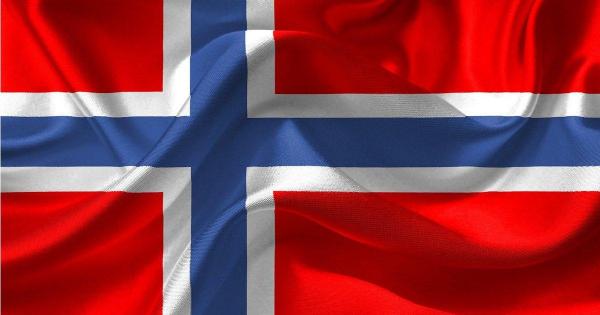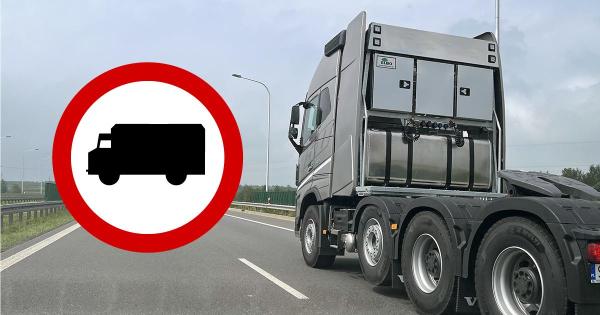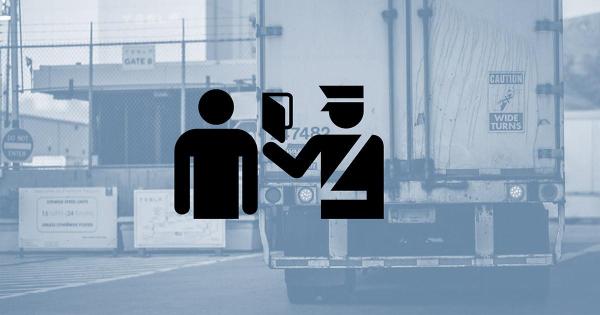
From August 1 Non-UK HGVs need to pay road user levy
The levy amount will be based on:
• vehicle weight as a broad approximation to CO2 emissions
• vehicle air quality emissions standard
• levy duration.
• vehicle weight as a broad approximation to CO2 emissions
• vehicle air quality emissions standard
• levy duration.
The levy was suspended in August 2020 to support the haulage sector and aid pandemic recovery efforts. Following a consultation in 2022, a new reformed levy will come into effect from August 2023 with a revised structure and rates.
Non-UK registered vehicles
The HGV levy has to paid for vehicles weighing 12,000kg or more and driving on motorways or ‘A’ roads in the UK.It must be paid before entering the UK.Drivers can pay a daily, weekly, monthly or yearly rate depending on how long the journey will last. A day runs from 12:00am (midnight) to 11:59pm that same day. Non-UK HGVs can use the HGV levy payment service now to pay in advance for trips you will make from 1 August onwards.
Rates payable
HGV levy rates for newer vehicles – Euro 6 class or later.

HGV levy rates for older vehicles – Euro 5 class or older.

For UK registered vehicles, both the HGV levy suspension and restart in August will be applied automatically by DVLA.

Norwegen lockert die Lenkzeiten und fordert die Transportunternehmen auf, Transporte einzustellen
Die Behörden des Kreises Innlandet fordern alle in der Transportbranche tätigen Personen auf, nicht unbedingt notwendige Lieferungen zu verschieben. Gleichzeitig hat die norwegische Regierung die Lenk- und Ruhezeitregeln gelockert.
Aufgrund des extremen Wetters am Mittwoch, dem 9. August, sind alle Hauptstraßen zwischen Oslo und Trondheim gesperrt worden. Das Binnenland Norwegens war mit 50 Straßensperrungen am stärksten betroffen. Der Verband NHO Logistics and Transport hat eine vorübergehende Lockerung der Lenk- und Ruhezeitvorschriften gefordert. Die norwegische öffentliche Straßenverwaltung reagierte fast sofort und genehmigte die Lockerung am Mittwochnachmittag. Vom 9. bis 20. August gelten die gelockerten Regeln.
Die gelockerten Regeln lauten wie folgt:
• Die tägliche Lenkzeit darf 10 Stunden (normalerweise 9 Stunden) nicht überschreiten.
• Die wöchentliche Lenkzeit darf 60 Stunden (normalerweise 56 Stunden) nicht überschreiten.
• Die Gesamtlenkzeit in zwei aufeinanderfolgenden Wochen darf 100 Stunden (normalerweise 90 Stunden) nicht überschreiten.
• Nach einer Fahrtdauer von bis zu 5 Stunden (normalerweise 4,5 Stunden) ist eine Pause von mindestens 45 Minuten erforderlich.
• Ein Fahrer kann eine unbegrenzte Anzahl reduzierter täglicher Ruhezeiten zwischen zwei wöchentlichen Ruhezeiten haben (normalerweise auf drei begrenzt).
• Fahrern, die die gelockerten Regeln anwenden, wird empfohlen, eine Kopie der vorübergehenden Regelung mitzuführen – Laden Sie das Dokument ⬅HIER herunter.
Ein Appell an Transportunternehmen
Der starke Güterverkehr kann zu Schäden an noch geöffneten Straßen führen. Autofahrer müssen bestehende Straßensperren respektieren. Sie dürfen nicht verschoben oder überquert werden. Das Betreten eines geschlossenen Bereichs kann gefährlich sein.
Derzeit ist die Autobahn 25 zusammen mit der Kreisstraße 26 durch Trysil und Engerdal die einzige für den Verkehr geöffnete Strecke zwischen Ostnorwegen und Trondheim. Diese Straßen können den starken Verkehr, der normalerweise auf den Autobahnen 3 und E6 verläuft, nicht bewältigen.
❗ Der Polizeipräsident hat Transportunternehmen gebeten, die Straße Nr. 26 nur für Lieferungen zu nutzen, die unbedingt notwendig sind. Dazu gehört der Transport von Gütern oder Tieren, die für die Lebensmittelsicherheit und den Tierschutz erforderlich sind. Andere Transporte sollten verschoben werden, bis sich die Situation verbessert.
❗Die Provinzstraße Nr. 30 ist für Fahrzeuge mit einem Gewicht von bis zu 3,5 Tonnen geöffnet.
❗ Der Punkt in Rendalen ist teilweise gesperrt.
Lkws, die auf den Straßen im Inland Norwegens unterwegs sind, können angehalten und umgeleitet oder umgedreht werden, wenn ständig neue und potenziell gefährliche Situationen auftreten.

Quiet zone’ to be trialled on A20 in Kent
National Highways is to trial a ‘quiet zone’ on the A20 near Aycliffe in Kent in a bid to reduce noise pollution when the A20 TAP is holding cross channel freight heading to the Port of Dover.
The ‘quiet zone’ will run along a 1.3km stretch of the coastbound A20 leading up to the Port of Dover from the Courtwood interchange to Western Heights roundabout. HGV drivers will be informed that they should not use their horns between 11:30pm and 7am.
From the end of this week signs will be in place along the A20 to inform drivers of the ‘quiet zone’. National Highways will also be sharing the news with haulage groups and ferry operators, as well as working with Kent police to provide additional visibility and where necessary enforcement. Any HGVs not complying with the signage risk a fine of £60.
The Operation Brock contraflow system is currently also in place on the M20 in Kent ahead of the summer holidays and expected high passenger numbers. All HGVs heading for the Port of Dover or Eurotunnel must follow the signs to join Operation Brock at M20 junction 8.
Any EU-bound HGVs not complying with signage and trying to use another route to Eurotunnel or the Port of Dover risk a fine of £300. They will also be sent to the back of the queue by Police or enforcement agents, wasting time, fuel, and money. This includes trying to bypass the M20 by using the M2/A2 at Brenley Corner. All other coast bound traffic – including local freight and car drivers heading for the continent – should follow the signs and cross over to enter the contraflow on the M20 London bound carriageway.

Chaos! Slowenien hebt das Fahrverbot am 14. August auf
Heute (10. August) wurde bekannt gegeben, dass aufgrund außergewöhnlicher Umstände alle LKWs mit einem zulässigen Gesamtgewicht von mehr als 7.500 kg am 14. August fahren dürfen.
Der gestrigen Ankündigung zufolge sollte die Beförderung von Lkw mit einem zulässigen Gesamtgewicht von mehr als 7.500 kg von Samstag, 12. August, bis Dienstag, 15. August, nur im Zusammenhang mit Hochwasserhilfemaßnahmen erlaubt sein. Nun hat das slowenische Ministerium das Fahrverbot am Montag, 14. August, aufgehoben. Aufgrund außergewöhnlicher Umstände dürfen an diesem Tag alle Lkw mit einem zulässigen Gesamtgewicht von mehr als 7.500 kg fahren.
Das Fahrverbot für Fahrzeuge mit einem zulässigen Gesamtgewicht über 7,5 Tonnen gilt am:
❌ 12. August, Samstag, von 8:00 bis 13:00 Uhr und von 18:00 bis 16:00 Uhr auf Straßen entlang der Küste;
❌ 14. August, Montag, von 8:00 bis 20:00 Uhr;
❌ 15. August, Dienstag, von 8:00 bis 20:00 Uhr;

Romania introduces additional driving bans in response to a heatwave
The bans apply to vehicles with a GVW of over 7.5 t on sections of national roads in selected districts.
The ban is in effect between July 17 and 19 from 12:00 to 8:00 PM on sections of national roads in the districts of Teleorman, Dâmbovița, Argeș, Prahova, Giurgiu, Ilfov, Olt, Dolj, Mehedinți, Gorj, Vâlcea, Arad, Timiș, Caraş Severin, Bihor, Vrancea, Galati, Buzău, Brăila, Ialomița, Calarasi. ❗ On sections of expressways and motorways managed by CNAIR SA, traffic continues without any restrictions.
The ban does not apply to:
• passenger transport;
• transport of live animals and perishable products of animal and vegetable origin;
• vehicles involved in emergency operations;
• funeral transports;
• postal transports;
• transport of first aid equipment;
• fuel distribution;
• transport of goods in controlled temperature;
• vehicles towing damaged vehicles;
• transports of water and food to disaster-stricken areas;
• transport of sanitary equipment in the construction industry by specialized vehicles used;
• transports of bottled water;
• transports of farm products;
• military transports taking part in multinational exercises.

Slowenien – zusätzliche Lkw-Fahrverbote vom 12. bis 15. August
Das Fahrverbot gilt für Fahrzeuge mit einem zulässigen Gesamtgewicht über 7,5 Tonnen zu folgenden Terminen:
❌ 12. August, Samstag, im Allgemeinen von 8:00 bis 13:00 Uhr und von 6:00 bis 16:00 Uhr auf Straßen entlang der Küste;
❌ 13. August, Sonntag, von 8:00 bis 20:00 Uhr;
❌ 15. August, Dienstag, von 8:00 bis 20:00 Uhr;
Von dem Verbot ausgenommen sind Fahrzeuge, die im Rahmen der Hochwasserhilfe eingesetzt werden.

Operation Brock contraflow is back
The Operation Brock contraflow system on the M20 in Kent will be deployed from Friday 14 July ahead of the summer holidays and expected high passenger numbers.
Operation Brock is part of a series of measures to improve Kent’s resilience and ensure the smooth flow of traffic through the region in the event of disruption to services across the English Channel.
To ensure safe deployment of the contraflow system, the M20 will be closed as follows:
• 9pm Tuesday 11 July to 6am Wednesday 12 July: Coast bound carriageway between junction 9 and junction 8
• 8pm Thursday 13 July to 6am Friday 14 July: London bound carriageway between junction 9 and junction 8, coast bound carriageway between junction 7 and junction 9
Fully signed diversion routes will be place while the M20 is closed overnight. These times have been chosen to minimise disruption to road users. When the M20 reopens at 6am on Friday 14 July, the Operation Brock contraflow will be in place and all signs and signals should be followed.
Once the barrier is in place, all HGVs heading for the Port of Dover or Eurotunnel must follow the signs to join Operation Brock at M20 junction 8.
Any EU-bound HGVs not complying with signage and trying to use another route to Eurotunnel or the Port of Dover risk a fine of £300. They will also be sent to the back of the queue by Police or enforcement agents, wasting time, fuel, and money. This includes trying to bypass the M20 by using the M2/A2 at Brenley Corner. All other coast bound traffic – including local freight and car drivers heading for the continent – should follow the signs and cross over to enter the contraflow on the M20 London bound carriageway.
Anyone planning to use Eurotunnel and the Port of Dover are advised to plan their journeys and check with the travel operator before setting out. They should also allow more time for their journeys and make sure they are prepared for delays, so should have plenty of fuel, warm clothes, and supplies such as food and drink. The contraflow is expected to be in place for two weeks.

Bedeutet ein Feiertag immer ein Fahrverbot?
Von Zeit zu Zeit werden wir gefragt, warum wir nicht über ein Fahrverbot informieren, wenn in einem bestimmten Land an einem bestimmten Tag ein Feiertag ist. Hier ist die Erklärung.
❌ Erstens gibt es nicht in jedem europäischen Land Verkehrsbeschränkungen für Lkw. Beispiele hierfür sind unter anderem Belgien, Dänemark und den Niederlanden.
❌ Zweitens ist zwischen Feiertagen und Tagen mit Lkw-Fahrverboten zu unterscheiden. Normalerweise überschneiden sie sich, aber das ist keine Regel, wie im Fall des Dreikönigsfestes (6. Januar). Während es in Polen und Deutschland ein gesetzlicher Feiertag ist, gibt es an diesem Tag in keinem Land ein Lkw-Fahrverbot. In Deutschland gibt es weitere solcher Beispiele: 15. August und 22. November.
❌ Da es in europäischen Ländern häufiger zu solchen Situationen kommt, sollte man immer prüfen, ob der Feiertag mit etwaigen Fahrverboten verbunden ist. Alle relevanten Informationen finden Sie auf trafficban.com.

Germany: changes in the HGV ban during the holiday season
Given recent changes in traffic volumes and the condition of some motorways and federal roads, the Federal Council has adopted the 13th amendment to the holiday travel ordinance.
The regulation introduces a driving ban for all vehicles with a GVW of more than 7.5 tons, used for commercial transport of goods, including empty runs, that applies on Saturdays from July 1 to August 31 between 7:00 AM and 8:00 PM., on selected sections of motorways and federal roads. The purpose of the ban is to make it easier for holiday travellers to reach their vacation destinations during the two months of the holiday season.
❗ To keep up with changing traffic volumes and the infrastructural development of the network of motorways and federal roads, the list of sections affected by the ban has been extended.
Justification
⭕ The A 4 motorway is the most important connecting route for holiday travel between south-west Germany or the Rhine-Main area and east Germany. In the area between the Kirchheim triangle and the Thuringia state border near Herleshausen, the motorway consists of four lanes. Up to 40,000 motor vehicles drive along the motorway every 24 hours, with HGV traffic accounting for 20-25 per cenr. There are sections with gradients of well over 4% (sometimes up to 6.5%). During the holiday season, the traffic volume can increase by 20-40 per cent. In addition, large parts of the route do not have a hard shoulder. Finally, as a result of expansion works, which are due to continue for several more years, there are frequent tailbacks with traffic moving at speeds below 60 kph, especially in the summer months.
⭕ The 5 motrway between the Homberg junction (Ohm) and Hattenbacher triangle has only four lanes. It is the most important connecting route for holiday travel between south-west Germany and the Rhine-Main area and north and east Germany. Well over 50,000 motor vehicles travel along the motorway every 24 hours and HGV traffic accounts for 18.5-20%. The motorway includes sections with a gradients of over 4-7%. During the holiday season, traffic valume on Saturdays can rise by 30-50 percent. The A 5 section from the Homberg junction (Ohm) to Bad Homburger Kreuz interchange is already listed in the Holiday Travel Ordinance. The new section has been added to close existing gaps. During the holiday seasons, there are frequent tailbacks with traffic moving at speeds below 60 kph. Lorries can use alternative routes along B49 and B62.
⭕ Once the expansion of the A 10 (including A 24) is complete, it is expected that the section of the A 10 from the Kreuz Oranienburg via the Pankow triangle to the Barnim triangle will have sufficient capacity to accommodate holiday traffic, as well as HGV traffic (especially vehicles with a GVW of more than 7, 5 tons) without bottlenecks. However, as a result of a significant number of commercial settlements around the motorway, it is necessary to relieve the increased traffic volume in the subordinate road network, particularly associated with commercial vehicles passing residential areas.

Lithuania reintroduces border controls with Poland and Latvia
The measure is connected with the NATO summit held in Vilnius from 11 to 12 July. Border checks start today, July 7, and will continue until July.
When crossing the internal border, travellers should carry with them:
a) personal travel documents:
• identity cards or passports (citizens of EU countries),
• passports and visas (non-EU nationals) if they are obliged to have a visa (or other documents enabling them to enter the territory of Schengen countries, such as temporary or permanent residence permits)
b) documents of the vehicle.
Because of internal border controls, journeys could potentially take longer, but travellers should not experience any major inconveniences as a result.
Border controls will also be introduced at airports for passengers of flights between countries of the Schengen area and at border crossings in seaports as well as for people crossing the land border with Poland and Latvia. Depending on the situation and potential threats, border checks will be conducted selectively based on a risk analysis at any time of the day. Temporary infrastructure will be used, including road signs and barriers to regulate traffic.